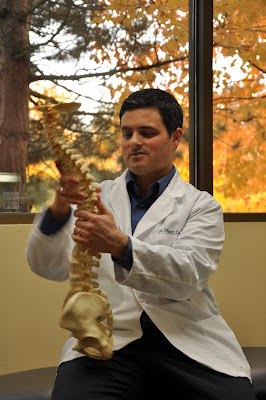Fight the Flu and Common Cold With Chiropractic
It's that time of year when coughing, sneezing and the flu is swirling around us. Chiropractic can help boost your immunity this season!
In 1918, the flu pandemic swept across the world infecting 100 million people and killing a high estimate of 50 million people. During this time, preventative measures, treatment and cures for the influenza were unknown. As the flu pandemic was spreading across the world, the practice of chiropractic was on the verge of extinction as the practice became the target of medical doctors with lenient slander laws. Because many chiropractors had such a decline in business during this time, chiropractors began doing house calls, adjusting anyone who had the flu.
The outcome for those infected with the flu who were adjusted by a chiropractor were astounding, thus they were nicknamed, "Flu Doctors":
In Davenport, Iowa, 50 medical doctors treated 4,953 cases, with 274 deaths. In the same city, 150 chiropractors including students and faculty of the Palmer School of Chiropractic treated 1,635 cases with only one death.
In the state of Iowa, medical doctors treated 93,590 patients, with 6,116 deaths – a loss of one patient out of every 15. In the same state, excluding Davenport, 4,735 patients were treated by chiropractors with a loss of only 6 cases – a loss of one patient out of every 789.
National figures show that 1,142 chiropractors treated 46,394 patients for influenza during 1918, with a loss of 54 patients – one out of every 886.
In the same epidemic, New York health authorities (who kept records of flu as a reportable disease) showed that under chiropractic care, only 25 patients died of influenza out of every 10,000 cases; and only 100 patients died of pneumonia out of every 10,000 cases. This comparison is made more striking when viewed in the following table:
Influenza
—————————————Cases Deaths
Under medical care 10,000 950
Under chiropractic care 10,000 25
Pneumonia
—————————————Cases Deaths
Under medical care 10,000 6,400
Under chiropractic care 10,000 100
The same epidemic reports show that chiropractors in Oklahoma treated 3,490 cases of influenza with only 7 deaths. But the best part of this is, in Oklahoma there is a clear record showing that chiropractors were called in 233 cases where medical doctors had cared for the patients, and finally gave them up as lost. The chiropractors saved all these lost cases but 25.The results that chiropractic care had on patients with influenza is not surprising, as research has shown that there is a direct interaction between the nervous system and the immune system when chiropractic care is administered.
How chiropractic revs up the immune system:
- Chiropractic adjustments ensure that the nerves from the brain down the spinal cord to the adrenal glands (which help manage the immune system) are not obstructed by vertebral subluxations which are misalignments in the spine that put pressure on the nerve system.
- Chiropractic adjustments decrease the stress hormone cortisol which increases our odds of becoming sick.
- Chiropractic adjustments to the upper neck have shown an increase to the white blood cell count up to 200%, which helps the body's immune system to be strong.
Best in health, naturally,
Dr. Marc
image
References:
1. "Chiropractic: Maybe the Best Defense Against Influenza." ChiroUnity. 27 April 2009.
2. Rhodes WR: “The Official History of Chiropractic in Texas.” Texas Chiropractic Association. Austin, TX. 1978.






















